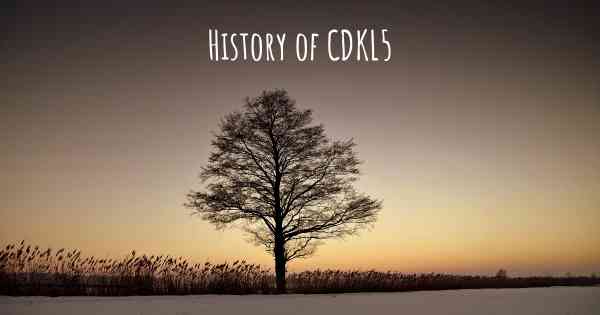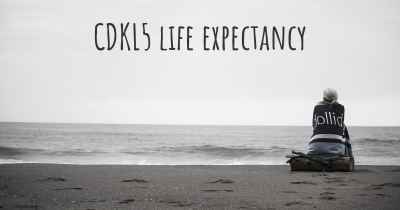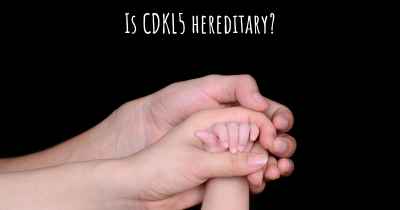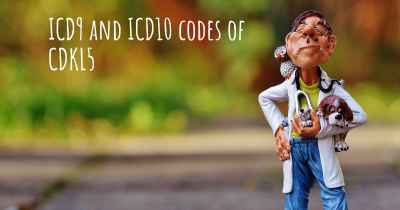What is the history of CDKL5?
When was CDKL5 discovered? What is the story of this discovery? Was it coincidence or not?

CDKL5, also known as cyclin-dependent kinase-like 5, is a gene located on the X chromosome that plays a crucial role in brain development and function. Mutations in the CDKL5 gene have been linked to a rare neurodevelopmental disorder called CDKL5 deficiency disorder (CDD), also known as atypical Rett syndrome. This disorder primarily affects females, as it is inherited in an X-linked dominant manner.
The history of CDKL5 dates back to the late 1990s when researchers first identified and characterized the gene. It was initially named STK9, as it was believed to be a serine/threonine kinase gene. However, further studies revealed its similarity to cyclin-dependent kinases (CDKs), leading to its renaming as CDKL5.
In 2003, the first mutations in the CDKL5 gene were discovered in individuals with early-onset seizures and severe developmental delays. These findings marked the identification of CDKL5 deficiency disorder as a distinct clinical entity. The symptoms observed in affected individuals were similar to those of Rett syndrome, a well-known genetic disorder primarily affecting females.
Over the years, extensive research has been conducted to understand the function of CDKL5 and the underlying mechanisms of CDKL5 deficiency disorder. Studies have shown that CDKL5 is involved in regulating various cellular processes, including neuronal development, synapse formation, and signal transduction. It acts as a kinase, modifying the activity of other proteins through phosphorylation.
The discovery of CDKL5 mutations has led to advancements in genetic testing and diagnosis of CDKL5 deficiency disorder. Genetic testing can now identify specific mutations in the CDKL5 gene, aiding in accurate diagnosis and providing valuable information for families and healthcare professionals.
The prevalence of CDKL5 deficiency disorder is estimated to be around 1 in 40,000 to 60,000 individuals. However, due to its rarity and overlapping symptoms with other neurodevelopmental disorders, it is often underdiagnosed or misdiagnosed. The disorder primarily affects females, as males with CDKL5 mutations typically experience severe prenatal or early postnatal complications and do not survive.
The symptoms of CDKL5 deficiency disorder are diverse and can vary significantly among affected individuals. Common features include early-onset seizures, severe developmental delays, intellectual disability, motor impairments, and visual problems. Additionally, individuals with CDKL5 deficiency disorder often exhibit autistic-like behaviors, sleep disturbances, and gastrointestinal issues.
Despite the challenges posed by CDKL5 deficiency disorder, significant progress has been made in understanding the condition and developing potential therapeutic approaches. Research efforts have focused on unraveling the molecular pathways affected by CDKL5 mutations and exploring targeted treatments to alleviate symptoms and improve the quality of life for affected individuals.
In recent years, animal models and cell-based studies have provided valuable insights into the pathogenesis of CDKL5 deficiency disorder. These findings have paved the way for the development of potential therapeutic strategies, including gene therapy, small molecule compounds, and targeted interventions aimed at restoring normal CDKL5 function or compensating for its absence.
The future holds promise for individuals with CDKL5 deficiency disorder, as ongoing research continues to shed light on the underlying mechanisms and potential treatment options. Collaborative efforts between researchers, clinicians, and affected families are crucial in advancing our understanding of CDKL5 and working towards improved outcomes for those living with this rare neurodevelopmental disorder.
Posted May 23, 2017 by Beth Ann 2120








